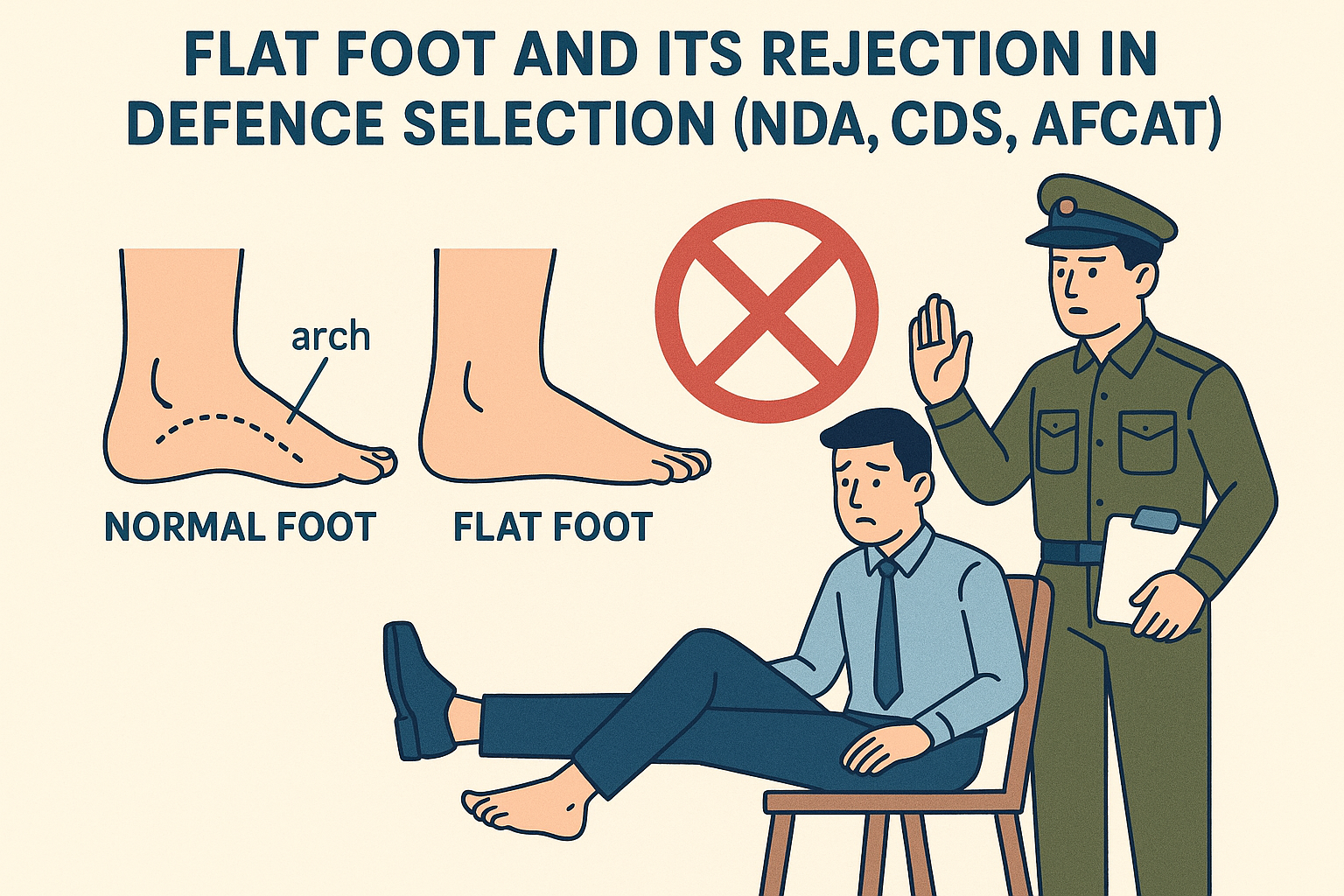What is Flat Foot?
Flat foot, also known as Pes Planus, is a medical condition where the arch of the foot collapses, and the entire sole of the foot comes into complete or near-complete contact with the ground. In simple terms, a person with flat feet does not have the natural curve in the middle of the foot. This condition can be present from birth (congenital) or develop later due to factors such as injury, obesity, or long-term stress on the feet.
Why Does Defence Reject Flat Foot?
The Armed Forces (NDA, CDS, AFCAT, and SSB medical boards) require candidates to be in peak physical health because defence jobs demand extensive physical activity, endurance, and mobility under extreme conditions. Flat foot becomes a concern because of the following reasons:
1. Reduced Shock Absorption
-
The natural arch of the foot acts like a spring, absorbing shocks during running, jumping, or marching.
-
Without the arch, the foot fails to distribute weight evenly, leading to quick fatigue.
2. Difficulty in Long Marches
-
Defence personnel often have to march long distances carrying heavy loads.
-
Flat-footed individuals are prone to pain, swelling, and early exhaustion in such scenarios.
3. Increased Risk of Injuries
-
Flat feet put extra stress on ankles, knees, and hips.
-
This misalignment can lead to frequent sprains, shin splints, or even long-term arthritis.
4. Impact on Balance and Agility
-
Defence operations require soldiers to run on uneven terrain, climb obstacles, or make quick movements.
-
Flat foot can affect balance and reduce agility, which can be life-threatening in combat situations.
Flat Foot in NDA, CDS, and AFCAT Medical Tests
During the SSB medical examination, candidates undergo a thorough physical check-up. Flat foot is tested by:
-
Wet Footprint Test – Candidate’s footprint on a surface shows absence of arch.
-
Visual and Manual Examination – Doctors check flexibility, pain, and arch development.
If the condition is severe and rigid, the candidate is declared medically unfit. Mild or flexible flat feet may sometimes be considered fit, but generally, the Armed Forces are very strict about this standard.
Can Flat Foot Be Corrected?
-
For children, exercises, orthotics (arch-support shoes), and physiotherapy may help improve the arch.
-
For adults, surgery is rarely recommended unless there is pain or severe deformity.
-
However, in defence recruitment, once flat foot is detected, it usually leads to rejection, since the forces cannot take the risk of long-term complications.
Conclusion
Flat foot may appear like a minor health condition in everyday life, but in the Armed Forces, it is considered a serious limitation. Since defence officers must perform under extreme physical stress and in challenging terrains, the absence of a proper foot arch can compromise efficiency, endurance, and overall combat readiness.
That is why candidates aspiring for NDA, CDS, and AFCAT must be aware of this medical standard before applying.






